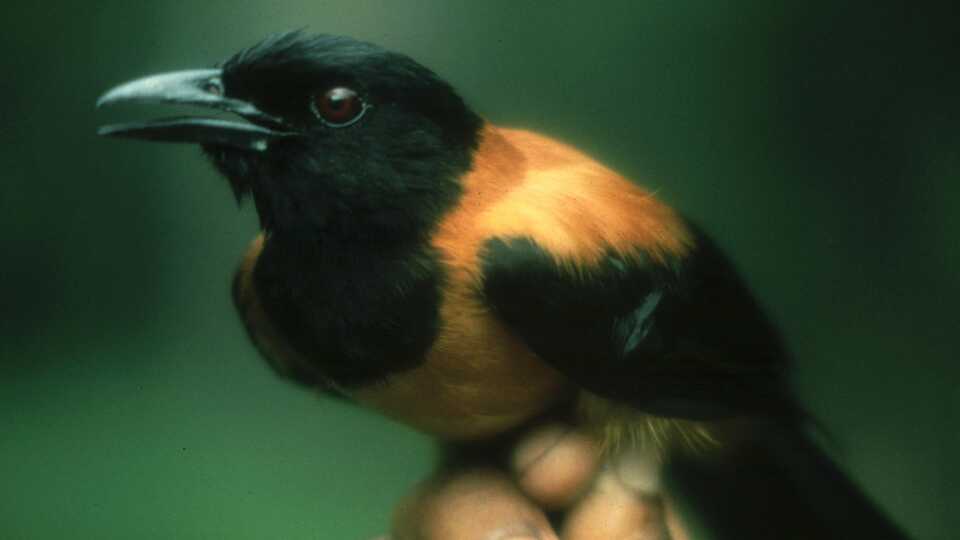Department: Ornithology & Mammalogy
Title: Curator of Ornithology and Mammalogy
Expeditions: 28
Most Recent Expedition: Namibia
Profile Videos:
What Magic Is
The Elegance of Evolution
Rare Poisonous Birds
Related Websites:
Jack's IBSS profile

Jack Dumbacher and his co-authors completed a phylogeny for the genus Pitohui (Dumbacher, J.P., K. Deiner, L. Thomsen, and R.C. Fleischer. 2008. Phylogeny of the avian genus Pitohui and the evolution of toxicity in birds. Molecular Phylogenetics and Evolution, 49: p. 774-781). It showed that the genus Pitohui is polyphyletic, meaning that it is composed of unrelated species. Our analyses of toxin evolution suggested that toxicity most likely evolved multiple times and that bright coloration and toxicity do not appear to be linked in the core Corvoidea. We suggest that the mis-classification of the genus Pitohui is due to convergent evolution, and that this convergence represents another possible example of Müllerian mimicry in birds. There is a taxonomic revision of the genus now published (Dumbacher, J.P. 2014. A taxonomic revision of the genus Pitohui, with historical notes on names. Bulletin of the British Ornithologists Club 134 (1): 19-22), and we are working on an in-depth phylogeny for the two most toxic highly polytypic species, the Hooded and Variable Pitohuis.
Dumbacher, et al. recently published data on the distribution of toxin in the bodies of pitohuis (Dumbacher, J.P., G.K. Menon, and J.W. Daly. 2009. Skin as a toxin storage organ in the endemic New Guinean genus Pitohui. The Auk, 126(3): p. 520-530). These data suggest that skin is a possible storage organ for the toxins. Using transmission electron microscopy and various staining methods,
Dumbacher and collaborators have subsequently studied how pitohuis sequester BTXs in their skin and how they move BTX into the stratum corneum and feathers. A second paper suggests a possible framework for this (Menon, G. and J.P. Dumbacher. 2014. A “toxin mantle “ as defensive barrier in a tropical bird: evolutionary exploitation of the basic permeability barrier forming organelles. Experimental Dermatology 23: 288) suggesting active toxin transport by an epidermal organelle called the multigranular body. We plan to continue our work to focus on how toxins are moved into feathers.
Our early experiments suggested that pitohui sodium channels are completely insensitive to BTXs. This is unusual, as the ion pore and BTX binding site are highly conserved across animals with voltage-gated sodium channels. I am currently collaborating with Megan Kobiela (a PhD student at University of Minnesota) and Butch Brodie (University of Virginia) to study sodium channel evolution in birds and the evolution of BTX resistance in the core Corvoidea. We have sequenced the entire Variable Pitohui (Pitohui kirhocephalus) genome and we are assembling sodium channel exons de-novo from the sequence reads for this work. This is a super cool use of whole genome sequencing technology for pulling out hard-to-decipher genes.
Department: Ornithology & Mammalogy
Title: Curator of Ornithology and Mammalogy
Expeditions: 28
Most Recent Expedition: Namibia
Profile Videos:
What Magic Is
The Elegance of Evolution
Rare Poisonous Birds
Related Websites:
Jack's IBSS profile